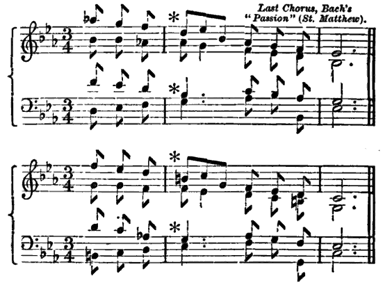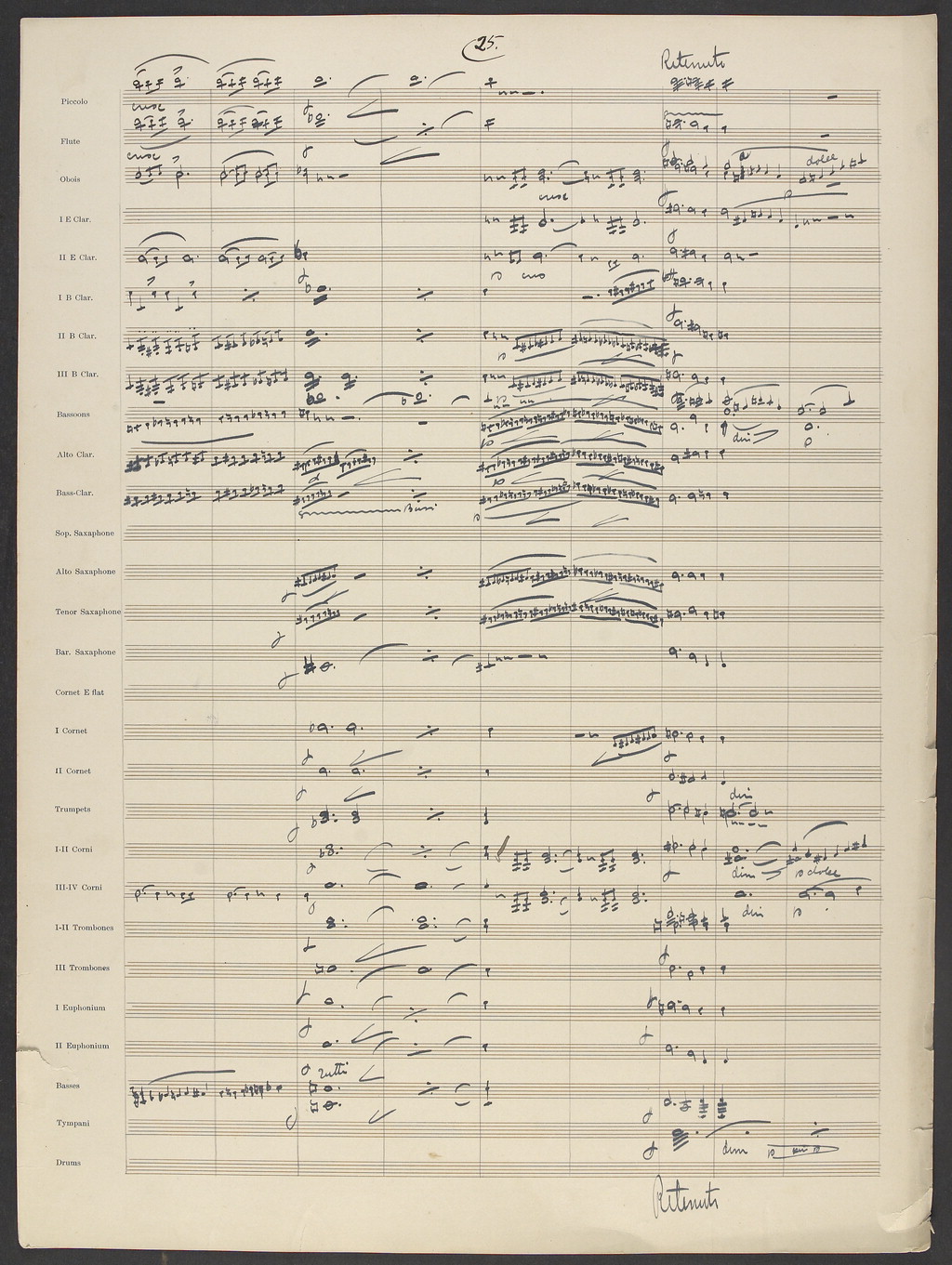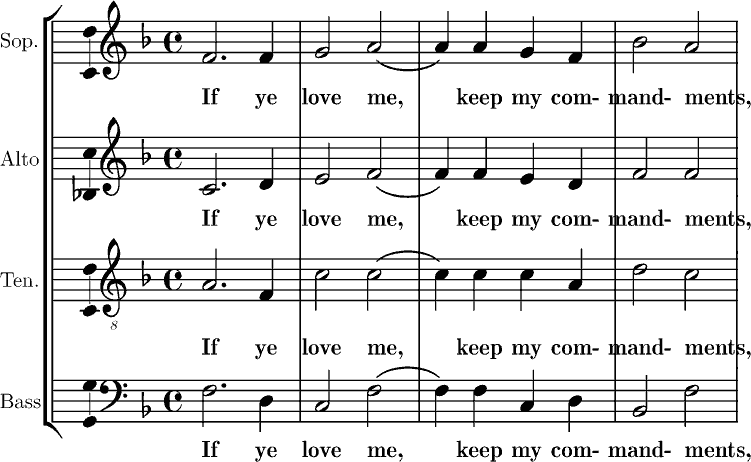|
Timbre
In music, timbre (), also known as tone color or tone quality (from psychoacoustics), is the perceived sound of a musical note, sound or tone. Timbre distinguishes sounds according to their source, such as choir voices and musical instruments. It also enables listeners to distinguish instruments in the same category (e.g., an oboe and a clarinet, both woodwinds). In simple terms, timbre is what makes a particular musical instrument or human voice have a different sound from another, even when they play or sing the same note. For instance, it is the difference in sound between a guitar and a piano playing the same note at the same volume. Both instruments can sound equally tuned in relation to each other as they play the same note, and while playing at the same amplitude level each instrument will still sound distinctive with its own unique tone color. Musicians distinguish instruments based on their varied timbres, even instruments playing notes at the same pitch and volume ... [...More Info...] [...Related Items...] OR: [Wikipedia] [Google] [Baidu] |
Pitch (music)
Pitch is a perception, perceptual property that allows sounds to be ordered on a frequency-related scale (music), scale, or more commonly, pitch is the quality that makes it possible to judge sounds as "higher" and "lower" in the sense associated with musical melody, melodies. Pitch is a major auditory system, auditory attribute of musical tones, along with duration (music), duration, loudness, and timbre. Pitch may be quantified as a frequency, but pitch is not a purely objective physical property; it is a subjective Psychoacoustics, psychoacoustical attribute of sound. Historically, the study of pitch and pitch perception has been a central problem in psychoacoustics, and has been instrumental in forming and testing theories of sound representation, processing, and perception in the auditory system. Perception Pitch and frequency Pitch is an auditory sensation in which a listener assigns musical tones to relative positions on a musical scale based primarily on their percep ... [...More Info...] [...Related Items...] OR: [Wikipedia] [Google] [Baidu] |
Fundamental Frequency
The fundamental frequency, often referred to simply as the ''fundamental'' (abbreviated as 0 or 1 ), is defined as the lowest frequency of a Periodic signal, periodic waveform. In music, the fundamental is the musical pitch (music), pitch of a note that is perceived as the lowest Harmonic series (music)#Partial, partial present. In terms of a superposition of Sine wave, sinusoids, the fundamental frequency is the lowest frequency sinusoidal in the sum of harmonically related frequencies, or the frequency of the difference between adjacent frequencies. In some contexts, the fundamental is usually abbreviated as 0, indicating the lowest frequency Zero-based numbering, counting from zero. In other contexts, it is more common to abbreviate it as 1, the first harmonic. (The second harmonic is then 2 = 2⋅1, etc.) According to Benward and Saker's ''Music: In Theory and Practice'': Explanation All sinusoidal and many non-sinusoidal waveforms repeat exactly over time – they are per ... [...More Info...] [...Related Items...] OR: [Wikipedia] [Google] [Baidu] |
Arrangement
In music, an arrangement is a musical adaptation of an existing composition. Differences from the original composition may include reharmonization, melodic paraphrasing, orchestration, or formal development. Arranging differs from orchestration in that the latter process is limited to the assignment of notes to instruments for performance by an orchestra, concert band, or other musical ensemble. Arranging "involves adding compositional techniques, such as new thematic material for introductions, transitions, or modulations, and endings. Arranging is the art of giving an existing melody musical variety".(Corozine 2002, p. 3) In jazz, a memorized (unwritten) arrangement of a new or pre-existing composition is known as a ''head arrangement''. Classical music Arrangement and transcriptions of classical and serious music go back to the early history of classical music. Eighteenth century J. S. Bach frequently made arrangements of his own and other composers' p ... [...More Info...] [...Related Items...] OR: [Wikipedia] [Google] [Baidu] |
Colors Of Noise
In audio engineering, electronics, physics, and many other fields, the color of noise or noise spectrum refers to the power spectrum of a noise signal (a signal produced by a stochastic process). Different colors of noise have significantly different properties. For example, as audio signals they will sound different to human ears, and as images they will have a visibly different texture. Therefore, each application typically requires noise of a specific color. This sense of 'color' for noise signals is similar to the concept of timbre in music (which is also called "tone color"; however, the latter is almost always used for sound, and may consider detailed features of the spectrum). The practice of naming kinds of noise after colors started with white noise, a signal whose spectrum has equal power within any equal interval of frequencies. That name was given by analogy with white light, which was (incorrectly) assumed to have such a flat power spectrum over the visible ... [...More Info...] [...Related Items...] OR: [Wikipedia] [Google] [Baidu] |
Homophony
In music, homophony (;, Greek: ὁμόφωνος, ''homóphōnos'', from ὁμός, ''homós'', "same" and φωνή, ''phōnē'', "sound, tone") is a texture in which a primary part is supported by one or more additional strands that provide the harmony. One melody predominates while the other parts play either single notes or an elaborate accompaniment. This differentiation of roles contrasts with equal-voice polyphony (in which similar lines move with rhythmic and melodic independence to form an even texture) and monophony (in which all parts move in unison or octaves). Historically, homophony and its differentiated roles for parts emerged in tandem with tonality, which gave distinct harmonic functions to the soprano, bass and inner voices. A homophonic texture may be homorhythmic, which means that all parts have the same rhythm. Chorale texture is another variant of homophony. The most common type of homophony is melody-dominated homophony, in which one voice, often the h ... [...More Info...] [...Related Items...] OR: [Wikipedia] [Google] [Baidu] |
Psychoacoustics
Psychoacoustics is the branch of psychophysics involving the scientific study of the perception of sound by the human auditory system. It is the branch of science studying the psychological responses associated with sound including noise, speech, and music. Psychoacoustics is an interdisciplinary field including psychology, acoustics, electronic engineering, physics, biology, physiology, and computer science. Background Hearing is not a purely mechanical phenomenon of wave propagation, but is also a sensory and perceptual event. When a person hears something, that something arrives at the ear as a mechanical sound wave traveling through the air, but within the ear it is transformed into neural action potentials. These nerve pulses then travel to the brain where they are perceived. Hence, in many problems in acoustics, such as for Auditory system, audio processing, it is advantageous to take into account not just the mechanics of the environment, but also the fact that both the ear ... [...More Info...] [...Related Items...] OR: [Wikipedia] [Google] [Baidu] |
Tonality
Tonality is the arrangement of pitch (music), pitches and / or chord (music), chords of a musical work in a hierarchy of perceived ''relations'', ''stabilities'', ''attractions'', and ''directionality''. In this hierarchy, the single pitch or the root (music), root of a triad (music), triad with the greatest ''stability'' in a melody or in its harmony is called the tonic (music), ''tonic''. In this context "stability" approximately means that a pitch occurs frequently in a melody – and usually is the final note – or that the pitch often appears in the harmony, even when it is not the pitch used in the melody. The ''root'' of the tonic triad forms the name given to the key (music), key, so in the key of C major, C major the note C can be both the tonic of the scale (music), scale and the root of the tonic triad. However, the tonic can be a different Musical tone, tone in the same scale, and then the work is said to be in one of the mode (music), ''modes'' of that ... [...More Info...] [...Related Items...] OR: [Wikipedia] [Google] [Baidu] |
Robert Erickson
Robert Erickson (March 7, 1917 – April 24, 1997) was an American modernist composer and influential music teacher. He was one of the first American composers to explore the twelve tone technique and to compose tape music. Education Erickson was born in Marquette, Michigan. He learned both piano and violin as a child, and studied composition with Ernst Krenek at Hamline University in Saint Paul, Minnesota, graduating in 1943. He returned to Hamline after three years in the US Army, and earned a Master of Arts in music in 1947. Career Teaching He taught at the College of St. Catherine in Saint Paul, Minnesota, San Francisco State College, the University of California, Berkeley, and chaired the composition department of the San Francisco Conservatory from 1957 to 1966. With composer Will Ogdon, he founded the music department at the University of California, San Diego (UCSD) in 1967: "We decided we wanted a department where composers could feel at home, the way scholars fe ... [...More Info...] [...Related Items...] OR: [Wikipedia] [Google] [Baidu] |
Spectral Envelope
In signal processing, the power spectrum S_(f) of a continuous time signal x(t) describes the distribution of power into frequency components f composing that signal. According to Fourier analysis, any physical signal can be decomposed into a number of discrete frequencies, or a spectrum of frequencies over a continuous range. The statistical average of any sort of signal (including noise) as analyzed in terms of its frequency content, is called its spectrum. When the energy of the signal is concentrated around a finite time interval, especially if its total energy is finite, one may compute the energy spectral density. More commonly used is the power spectral density (PSD, or simply power spectrum), which applies to signals existing over ''all'' time, or over a time period large enough (especially in relation to the duration of a measurement) that it could as well have been over an infinite time interval. The PSD then refers to the spectral energy distribution that would be ... [...More Info...] [...Related Items...] OR: [Wikipedia] [Google] [Baidu] |
Acoustical Society Of America
The Acoustical Society of America (ASA) is an international scientific society founded in 1929 dedicated to generating, disseminating and promoting the knowledge of acoustics and its practical applications. The Society is primarily a voluntary organization of about 7500 members and attracts the interest, commitment, and service of many professionals. History In the summer of 1928, (See Wallace Clement Sabine.) Floyd R. Watson and Wallace Waterfall (1900–1974), a former doctoral student of Watson, were invited by UCLA's Vern Oliver Knudsen to an evening dinner at Knudsen's beach club in Santa Monica. The three physicists decided to form a society of acoustical engineers interested in architectural acoustics. In the early part of December 1928, Wallace Waterfall sent letters to sixteen people inquiring about the possibility of organizing such a society. Harvey Fletcher offered the use of the Bell Telephone Laboratories at Bell Laboratories Building (Manhattan), 463 West Street in M ... [...More Info...] [...Related Items...] OR: [Wikipedia] [Google] [Baidu] |
White Noise
In signal processing, white noise is a random signal having equal intensity at different frequencies, giving it a constant power spectral density. The term is used with this or similar meanings in many scientific and technical disciplines, including physics, acoustical engineering, telecommunications, and statistical forecasting. White noise refers to a statistical model for signals and signal sources, not to any specific signal. White noise draws its name from white light, although light that appears white generally does not have a flat power spectral density over the visible band. In discrete time, white noise is a discrete signal whose samples are regarded as a sequence of serially uncorrelated random variables with zero mean and finite variance; a single realization of white noise is a random shock. In some contexts, it is also required that the samples be independent and have identical probability distribution (in other words independent and identically distribu ... [...More Info...] [...Related Items...] OR: [Wikipedia] [Google] [Baidu] |
Pink Noise
Pink noise, noise, fractional noise or fractal noise is a signal (information theory), signal or process with a frequency spectrum such that the power spectral density (power per frequency interval) is inversely proportional to the frequency of the signal. In pink noise, each Octave (electronics), octave interval (halving or doubling in frequency) carries an equal amount of noise energy. Pink noise sounds like a waterfall. It is often used to tune loudspeaker systems in professional audio. Pink noise is one of the most commonly observed signals in biological systems. The name arises from the pink appearance of visible light with this power spectrum. This is in contrast with white noise which has equal intensity per frequency interval. Definition Within the scientific literature, the term "1/f noise" is sometimes used loosely to refer to any noise with a power spectral density of the form S(f) \propto \frac, where is frequency, and , with exponent usually close to 1. On ... [...More Info...] [...Related Items...] OR: [Wikipedia] [Google] [Baidu] |





